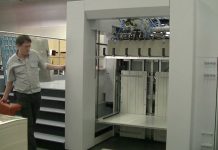Self-driving cars, also known as autonomous vehicles, represent a transformative paradigm in the automotive industry. These cars use cutting-edge technologies, such as connectivity, sensors, and artificial intelligence, to navigate and function without the need for human intervention. The concept of self-driving cars envisions a future where transportation becomes safer, more efficient, and accessible to a broader population.
At the core of self-driving cars is the ability to perceive and interpret the surrounding environment through an array of sensors, such as lidar, radar, and cameras. These sensors feed real-time data to onboard computer systems, enabling the vehicle to make informed decisions and respond to dynamic road conditions. You can go now to this link to get details about the card dispenser.
The promise of self-driving cars extends beyond convenience, aiming to address road safety concerns, reduce traffic congestion, and provide mobility solutions for individuals with limited transportation options. If the card dispenser motor relies on encoders or sensors for feedback and position control, malfunctions in these components can lead to speed irregularities. Inspect and troubleshoot the encoder or sensor system to identify and rectify any issues affecting the motor’s speed control.
Potential Reasons for Slow Driving of Card Dispenser Motor
A card dispenser motor operating at a slower speed than expected can be attributed to various factors, ranging from mechanical issues to electrical problems. Identifying and addressing the root cause is crucial for restoring optimal performance. Here are several potential reasons why your card dispenser motor may be driving slowly:
Power Supply Irregularities
One of the common reasons for a slow card dispenser motor is inadequate power supply. Verify the voltage and current the motor is receiving match the manufacturer’s specifications. Check for loose connections, damaged cables, or power fluctuations that might affect the motor’s performance. If the power supply is unstable or below the motor’s requirements, it can result in reduced speed.
Mechanical Obstructions or Binding
Mechanical issues can significantly impact the motor’s speed. Check the card path and dispenser components for any obstructions, misalignments, or binding. Foreign objects, debris, or misaligned parts can create resistance, impeding the motor’s movement. Clear any obstructions and ensure that all mechanical components are in proper working order.
Motor Wear and Tear
Over time, motors can experience wear and tear, affecting their efficiency. Inspect the motor for signs of damage, such as worn-out brushes, damaged windings, or mechanical fatigue. If the motor components show visible signs of deterioration, consider replacing or repairing the motor to restore its performance.
Lubrication Issues
Inadequate or dried-out lubrication in the moving parts of the motor and associated mechanisms can increase friction and lead to slower operation. Regularly lubricate the motor’s components following the manufacturer’s guidelines to ensure smooth movement and reduce friction.
Temperature Effects
Extreme temperatures can have adverse effects on motor performance. If the card dispenser operates in an environment with temperatures outside the recommended range, it may affect the motor’s efficiency. Ensure that the operating conditions align with the specified temperature range to optimize motor function.
Control System Malfunctions
Malfunctions in the control system, such as issues with the controller or feedback system, can result in incorrect motor speed. Perform diagnostics on the control electronics to identify any faults or errors affecting the motor’s performance. Check for loose connections, damaged components, or errors in the control software.
Sum Up
Troubleshooting a slow card dispenser motor involves a systematic approach to identify and address the specific issues affecting its performance. Regular maintenance, adherence to manufacturer guidelines, and thorough inspections can help maintain optimal motor function. If the problem persists or if you encounter challenges in diagnosing the issue, seeking assistance from the manufacturer’s technical support or a qualified technician is recommended.







